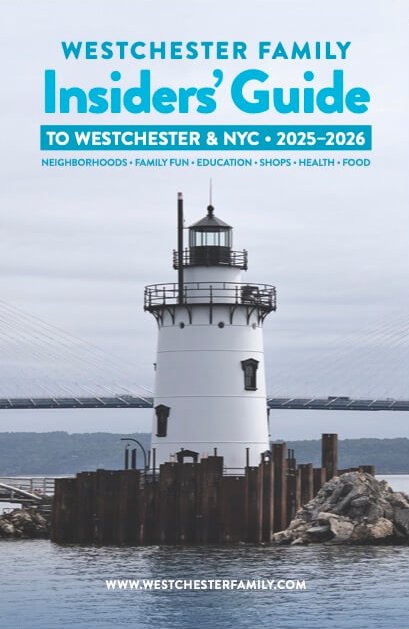Thousands of children across Westchester are going back to school in September, but behind the excitement of another school year, a growing number of them are returning to the classroom with an array of food allergies, many of them life-threatening.
The concern is very real, as a 2013 study by the Centers for Disease Control and Prevention points out. The report discloses that between 1997 and 2011, food allergies among American children have increased by 50 percent.
The eight most common culprits include eggs, fish, milk, peanuts, shellfish, soy, tree nuts and wheat, although peanut and tree nut allergies seem to be the most common. According to the Food Allergy Research Education (FARE) group, the number of children living with peanut allergies tripled between 1997 and 2008.
While the cause of the increase is unclear, attempts to control food allergies, especially in the school environment, have varied nationwide. A survey conducted in 2005 by the School Nutrition Association found that only 57 percent of districts nationwide had a food allergy preparedness plan in place.
In 2011, Congress passed the Food Safety Modernization Act to improve food safety throughout the nation by shifting the focus from response to prevention. What came out of that was the CDC’s “Voluntary Guidelines for Managing Food Allergies in Schools and Early Care and Education Programs,” the first national comprehensive set of guidelines, which was published in October 2013.
The federal guidelines serve as a foundation for schools to implement food allergy policies, and are especially helpful to states that do not have their own guidelines. In New York, many districts refer to a document from the state departments of health and education and the New York Statewide School Health Services Center titled, “Making the Difference: Caring for Students with Life-Threatening Allergies.”
Creating a Practice That Educates
While some schools enforce a nut-free policy, prohibiting peanuts or tree nuts of any kind, others, like the Blind Brook and Irvington schools, have taken a more practical approach by establishing an “allergy aware” plan.
That means children with allergies have the freedom to sit with their friends in the cafeteria while students who are allergy-free may bring in foods with peanuts or nuts. They must, however, sit in designated “safe-zones” and/or tables on those days.
This change also means that EpiPens® are more readily available throughout the schools and teachers and staff are trained on how to use them in the event of an anaphylactic reaction. In addition, there are programs to educate the students about life-threatening food allergies.
“What we’ve created here in Irvington is an educational campaign, if you will, that focuses on the welfare of all students, but with a particular focus on children with allergies,” says Randy Lichtenwalner, principal of Dows Lane Elementary School (K-3), which is one of two schools in the district that has implemented allergy awareness practices.
The Main Street School, which educates students in grades 4 through 5, is the other one.
Lichtenwalner says the district’s food allergy approach not only includes the implementation of proper precautionary measures but more importantly, it’s a well thought-out education campaign that is mindful of everyone. “It’s more about how much we care about each other in the school setting,” he says.
Irvington Superintendent Kristopher Harrison believes it is relevant to many aspects of learning, including the district’s character education program. “It ties into so much of the work that’s inherent in Dows Lane and indeed in most school communities.”
Irvington parent Jackie Ourman agrees. “The kids are now champions of this,” she says, referring to its success. “They are aware of it and are taking care of each other.”
Ourman, the mother of three, was one of several parents who helped initiate the plan. Her eldest son, Jake, is allergic to peanuts, most tree nuts and sesame, and her second son has celiac disease and also suffers from the same allergies as his older brother. Her youngest son does not have allergies.
Understandably, she was eager to make a difference to the district’s allergy management practices. Prior to developing the current initiative, Ourman says there was a lot of concern, including the fact that EpiPens®, the devices that are used to treat anaphylaxis, were not readily accessible, that the faculty and staff were not adequately trained in emergency procedures, and that the cafeteria was still serving peanut butter and jelly sandwiches.
Learning Best Practices From Others
She and a couple of other parents, including Katie Carron, the mother of a child with food allergies, and Dows Lane interim principal Mary Flynn McGuire, along with school nurse Susan Caporal, were interested in seeing how other schools were tackling the issue.
They turned to Blind Brook School District’s Hildie Kalish, the school nurse at the Bruno M. Ponterio Ridge Street School in Rye Brook, who was an early adopter of the school’s allergy aware movement. She admits it took some time to adequately train the staff and get everyone on board, but the policy at the Ridge Street School operates seamlessly now.
Similar to the strategies that are now in place at Dows Lane and the Main Street School, a section of the cafeteria at the Ridge Street School is reserved for children who want to eat items containing nuts and/or its by-products.
“Those tables are watched very, very closely,” says Kalish, adding that the children who sit at such tables must clean their hands with appropriate wipes. The school’s allergy aware protocol is sent to every teacher at the school, all of whom are trained in the proper use of EpiPens®. Kalish keeps between 65 and 70 EpiPens® in her office, all of them containing each child’s name, which is stored alphabetically for easy retrieval.
Specific medical instructions and an adequate supply of Benadryl are also kept close at hand. “It’s been a process … but it’s certainly a worthwhile program, and once in place, it really works,” adds Kalish. “You have to be willing to put the time into it.”
Ourman says she came away from her initial meeting with Kalish thinking that the Irvington Schools could duplicate such a practice. Not only was Ourman impressed by the array of procedures in place at the Rye Brook school, but she also felt that such an initiative could help make the school administration and the community as a whole more aware of the dangers of food allergies and how to protect the children who have them.
Creating Compassionate Students
“A by-product of this food allergy management practice has been the chance to teach empathy and compassion to all children,” says Allison Waguespack, whose son does not have allergies. “It has been very heartwarming to see the children taking care of each other. Anytime my son has a play date or we are bringing something to school, he is always checking to make sure all of the food is safe.”
Carron, who has three sons with food allergies, concurs, adding that students routinely look out for their friends who suffer from allergies, checking ingredients and labels and ensuring that the snacks and treats brought into the classroom are safe. “They get that they are part of a community and that they all have a responsibility for each other, and that’s a pretty valuable lesson to learn,” she adds.
Lichtenwalner says he was happy to coordinate with Ourman, a trained chef, freelance recipe developer and blogger as well as with the other parents involved. That first year, they started the education campaign during Food Allergy Awareness Week, a series of initiatives that takes place in May to raise awareness about food allergies. Since then, they have invited speakers to the district and organized other educational initiatives around food allergies.
“At this point, our approach is that we teach students about the dangers of food allergies, but we also teach them about the kinds of foods that contain peanuts and other allergens, as well as telling them that it’s our responsibility to take care of each other,” explains Lichtenwalner.
This kind of attitude is particularly important to impress on students in situations like classroom celebrations such as birthday parties and other events. The district’s practice is that students bring treats to school in bags that are clearly labeled showing the ingredients of each snack.
“It’s not just about letting a child with a peanut allergy have a cupcake,” adds Ourman. “It’s about eliminating the potential cause of anaphylaxis, a life-threatening reaction, in the classroom.”
Creating a Well-Thought-Out Approach
No matter how a school district chooses to address food allergies, Michael Pistiner, a pediatric allergist and founder of Allergy Home, a website providing practical teaching tools for those who care for children with food allergens, says school districts need to be clear in their objectives and in their food allergy policies.
“What schools need to do is to implement an effective, adequate food allergy management program at all times and in all circumstances to ensure the prevention of allergic exposures as well as having an emergency preparedness plan in place.”
So rather than saying a school is “nut aware” or “nut free,” (which bans food of any kind that contains allergens like peanuts and tree nuts), the policy should keep certain factors in mind.
Pistiner says those include students’ developmental capabilities and their ability to participate in self-management skills such as effective hand washing and not putting their hands or objects in their mouths, as well as that school’s resources and physical space, especially important if children eat and learn in the same environment.
To ensure that an effective food allergy management program is in place, Pistiner, a volunteer consultant to the Massachusetts Dept. of School Health Services, says schools must follow proper procedures, such as reading labels, avoiding outside food, knowing where hidden allergens may exist, preventing the sharing of food and encouraging students to thoroughly wash their hands.
In essence, they must have a proper food allergy management program in place, he adds, which also includes the proper training of staff in avoiding accidental exposures, recognizing allergic reactions and anaphylaxis, as well as administering epinephrine.
“Clearly defining what the restriction is and then having a good thought-out process as to why we’re choosing to restrict that allergen, and also remembering the basic food allergy management policies, will ensure that a school makes the right choice,” he adds.
Waguespack, co-president of the PTSA, believes the district’s practices are adaptable. “Overall, I think parents understand that these allergies are life-threatening. This is not about food preference here; this is life and death for these children.”
Colette Connolly is a Bronxville-based freelance writer and a frequent contributor to Westchester Family.
Resources
There are many resources that can assist parents and school administrators in understanding and implementing effective food allergy practices. Here are a few to consider.
• Find out more about food allergies and how schools are managing such issues by checking out the AllergyHome.org website. allergyhome.org/schools/.
• Subscribe to Pistiner’s AllergyHome.org blog and get the latest information on food allergy management from a pediatric allergist’s perspective. allergyhome.org/blogger.
• Centers for Disease Control and Prevention’s food allergy guidelines can be found at cdc.gov/healthyyouth/foodallergies/pdf/13_243135_A_Food_Allergy_Web_508.pdf.
• New York State’s food allergy guidelines can be accessed at health.ny.gov/professionals/protocols_and_guidelines/docs/caring_for_students_with_life_threatening_allergies.pdf.
• Follow Ourman’s blog at jackieourman.com.
Get Involved!
The Food Allergy Research and Education (FARE) is a provider of information about research that is being conducted on food allergies and other important information at foodallergy.org/home.
The organization is sponsoring a FARE Walk for Food Allergies in Westchester on September 21 beginning at 1 p.m. at Glen Island Park in New Rochelle. For more information, go to foodallergywalk.org/westchester2014 or contact hillarycarter@gmail.com.









